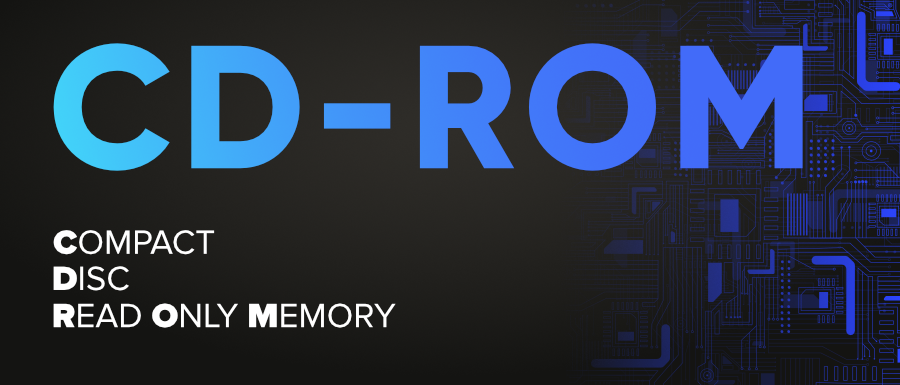CD-ROM Full Form
Last Updated :
28 Aug, 2023
CDs or Compact Disks are optically readable media. CDs are the replacement for the phonograph disc. The main material of the CD is plastic. The shape of the plastic is circular and one side of the circular plastic is coated with the reflecting metal coating, usually aluminium. There are mainly three types of CDs available CD-R, CD-ROM and CD-RW. In this article, we will discuss CD-ROM in detail.
What is CD-ROM?
CD-ROM stands for Compact Disc Read-Only Memory. The CD-ROM in all of its non-erasable, non-writable glory, existed long before it infiltrated our system with its youthful promise of infinite information. ROM stands for Read-Only Memory it cannot be altered or erased. Binary (Digital) data that is encoded on little pits on the optical disc are read by the laser beams which are situated in the Optical Reader. It is an optical disc that has the capacity to store data, music files, video files, games, etc.

Characteristics of CD-ROM
- CD-ROM is made up of clear poly-carbonate plastic, coated with a reflective material and a protective coat of clear lacquer.
- CD-ROM can only be read by CD-ROM Readers. Normal readers cannot read the CD-ROM disks.
- CD-ROM can hold up to 700 Megabytes of data, roughly 3, 00, 000 typewritten pages.
- It can store audios, still videos, pictures and animated graphics and full motion video as well.
History of CD-ROM
The first theoretical studies on optical disc storage were produced by independent scholars in the United States, such as David Paul Gregg (1958) and James Russell (1965-1975). Gregg’s discoveries, in particular, were the basis for the LaserDisc specification, which was developed jointly by MCA and Philips after MCA purchased Gregg’s patents and the company he founded, Gauss Electrophysics. The CD-ROM format was introduced by a Japanese company Danon in 1982. Later on, CD-ROM was introduced by Danon and Sony at the 1st Japanese COMDEX computer show in 1985. After this the CD-ROM was famous and was used everywhere. It Started developing itself. The format of CD-ROM was introduced by Sony and Philips in 1983, which was called as Yellow Book.
CD-ROMs were initially used in home video game systems with the debut of the computer Engine CD-ROM2 (TurboGrafx-CD) in 1988. CD-ROM drives were added to personal computers by the end of the 1980s. Data east demonstrated a board for an arcade system that accepted CD-ROMs in 1990.
Advantages of CD-ROM
- CD-ROM can be accessed randomly.
- CD-ROM is the most cost effective way to produce and distribute large quantities of data.
- Compare to other storage disks, a CD-ROM is very rugged.
- CD-ROM is long-lasting.
- It is a secure medium for storing large amounts of read only information.
Disadvantage of CD-ROM
- The biggest complaint is that they are relatively slow.
- Once it is filled up with data, new data cannot be entered on it.
- Smaller storage capacity than hard disks.
- It can be easily scratched and after the scratches it won’t work properly.
CD ROM – FAQs
1. Can a CD-ROM player read by a DVD?
A DVD, whether data or movie, cannot be read by a CD-ROM player. A CD-ROM drive is not developed to read the format of a DVD because it different from a CD. A DVD can be read only by using a DVD-ROM drive.
2. How CD-ROMs Are Made?
CD-ROMs are created by “burning” a blank CD-R disc and submitting it to a media maker, who makes a master disc from which the required amount is stamped.
3. How does a computer read a CD-ROM?
CD-ROMs are read by your computer in the same manner that an LP(Long Play) is read by your record player. A sequence of small pits are positioned in a spiral across the surface of the CD-ROM. Instead of a needle, your computer’s optical drive uses a laser to measure the depth of each pit and convert it to binary code that your computer can understand.
Like Article
Suggest improvement
Share your thoughts in the comments
Please Login to comment...